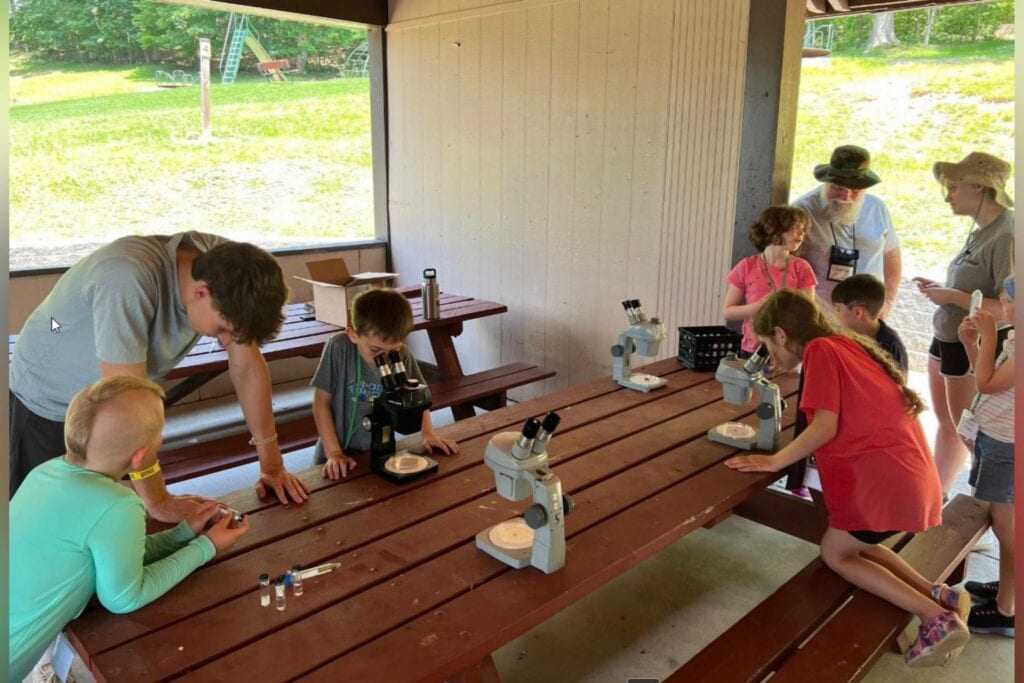West Virginia University scientists are on the front lines of the battle against pasture parasites – especially those detrimental to sheep populations.
Of the many parasites that effect sheep populations, the most deadly and difficult to control is Haemonchus contortus or barber pole worm.
The drug-resistant, vampire-like parasite pierces the sheep’s stomach and feasts on its blood leading to anemia, weight loss and death in severe cases, all of which result in economic losses for producers.
Trying to understand why some breeds of sheep are more susceptible to parasitic infection than others is a puzzle, but researchers in the Davis College of Agriculture, Natural Resources and Design are putting it together piece by piece.
Results of a new study authored by Javier Garza, veterinary parasitologist and postdoctoral research fellow, and Scott Bowdridge, assistant professor of food animal production, suggest that parasite susceptibility in sheep may be due to differences in the ability of immune cells to properly respond to the parasite.
Neutrophils, one of the most common white blood cells in mammals, represent the first line of defense against pathogens during infection.
“From prior research, we knew that neutrophils are present in large numbers as early as three days after infection in parasite-resistant St. Croix sheep but not in susceptible breeds like Suffolk,” Garza explained. “They are there for a reason, and I wanted to expand that knowledge and better understand how neutrophils may be interacting with the worms.”
A tropical breed from the U.S. Virgin Islands, St. Croix sheep developed under constant exposure to parasites which resulted in a super-charged immune response to assault from parasitic invaders. However, the breed has little to no commercial value in the United States. Breeds like Suffolk are prized by America’s meat and wool producers but are relatively helpless in the face of parasitic assault.
In the Parasite Immunology Laboratory at WVU, Garza isolated cells from both breeds and exposed them to the parasite at different stages in the life cycle.
“Animals become infected with Haemonchus by ingesting larvae that migrate onto blades of grass from the soil,” Garza said. “Once ingested, the parasites travel to the abomasum – the section of the four-chambered sheep stomach that is most similar to the human stomach – where they shed their outer protective covering and begin to feed on blood. After about seven days, the larvae begin to develop into adults, mate, and the females shed thousands of eggs daily that travel through the intestines and are released into the environment with feces.”
He found neutrophils from both breeds respond to the third larval stage, also known as the infective stage of the parasite; however, St. Croix produce a more potent and aggressive response than Suffolk.
“Neutrophils from both breeds are able to release their DNA into the environment and form net-like structures in response to the larvae; however, St. Croix neutrophils are much more effective at this,” he said. “These extracellular traps ensnare the larvae and impair their ability to swim freely.”
He also discovered that St. Croix neutrophils are able to kill larvae much more effectively than their Suffolk counterparts.
“This is the first study to show that sheep neutrophils are able to form extracellular traps in response to helminth parasites. It also highlights the differences in the innate immune responses between each breed,” Garza said. “The ability of St. Croix neutrophils to trap and kill the larval stages of the barber pole worm may be the key to their resistance.”
Understanding the mysterious and complex host-parasite relationship is essential to developing new treatments and this study provides insight on the early stages of the host immune response to Haemonchus.
“Because drug resistance in Haemonchus is widespread and increasing, there is an ever-growing need for alternative treatment methods,” he said. “Knowledge gained from this research can advance vaccine development which would benefit producers.”













